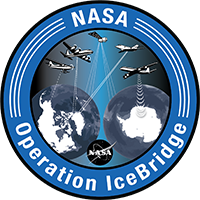Data Management Plan
Link to full-text PDFs:
IceBridge Data Management Plan (pdf)
NASA Earth Science Data Preservation Content Specification (pdf)
Abstract
This document is a detailed plan for all management of Operation IceBridge data throughout its project lifecycle ending in 2020. Its content is applicable to all data providers and all data sets unless specific exceptions are made.
Earth Science Data and Information System Project, Code 423
Effective Date: Sept 2018
Expiration Date: Sept 2023
Reviewed by:
Jeanne Behnke
ESDIS Deputy – Operations
GSFC – Code 423
Steve Tanner
DAAC Operation IceBridge
Manager
National Snow and Ice Data Center
Approved by:
Andrew Mitchell
ESDIS Project Manager
GSFC – Code 423
Joseph MacGregor
Operation IceBridge Project Scientist
GSFC – Code 615
Amanda Leon
NSIDC DAAC Manager
National Snow and Ice Data Center





